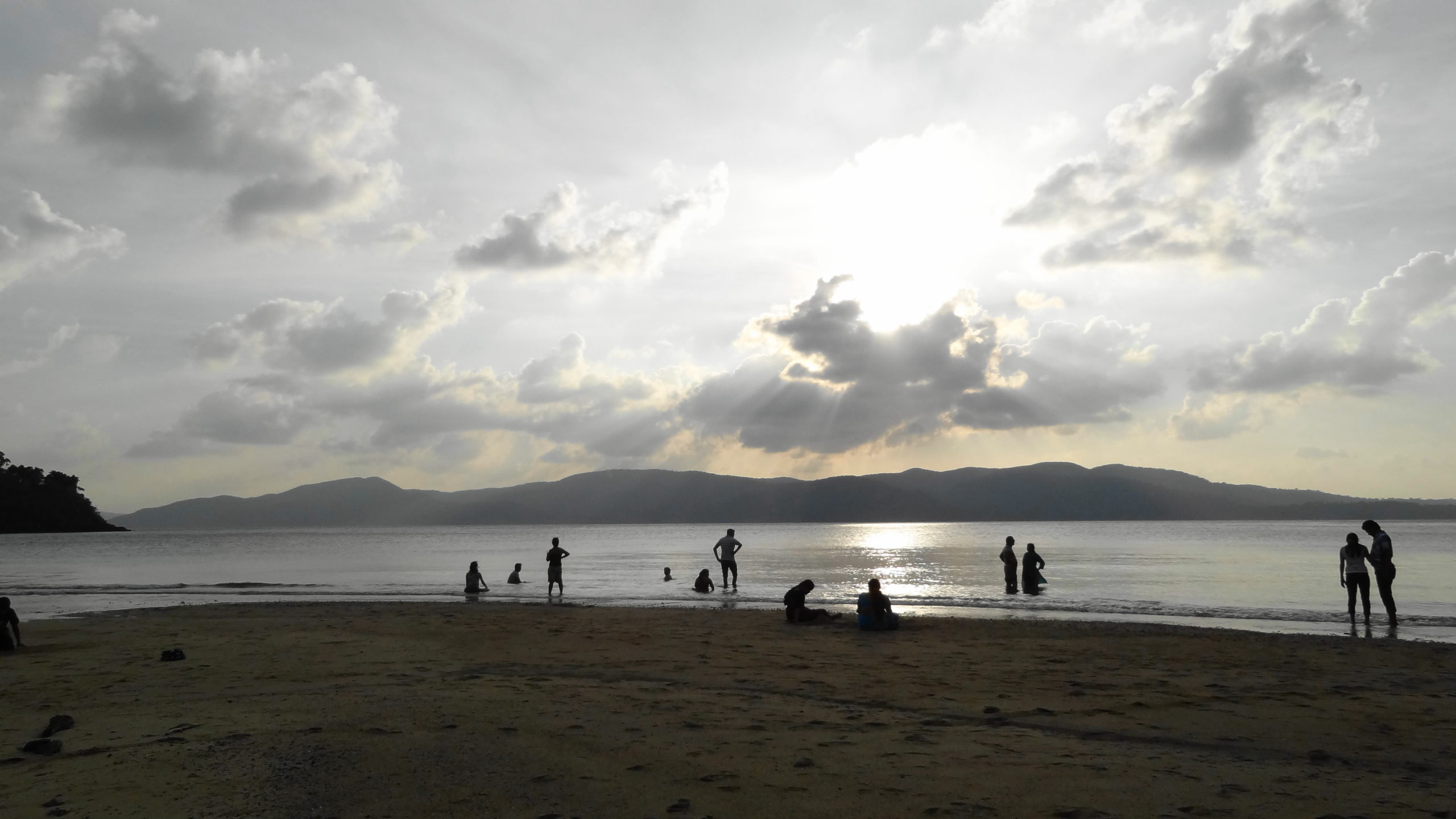
Tourists often litter beaches like Sunset Point, Andaman (above) with waste that poses a major threat to the marine environment. Picture Credit: Aliven Sarkar, Sunset Point, Andaman, CC BY-SA 3.0
Beaches are among the top tourist destinations in India today. They’re mostly advertised as a virgin, untouched paradise with pristine blue seas and pretty white sand to rejuvenate you, to escape from the hustle and bustle of cities, and all the noise in various forms that a city life entails. Well, there’s much more to this than meets the eye which often goes ignored.
In my experience, where there’s tourism, there’s waste – and where there’s litter on the beaches, there are long-ranging impacts that reach as deep as several metres below the surface of the sea.
I’ve lived in the Andaman and Nicobar Islands and worked in the Lakshadweep Islands for a while. In the two years that I lived in South Andaman, I lost count of the number of times I came across littered beaches. From plastic beverage bottles to food wrappers, broken slippers to empty shampoo bottles, you name it and I’ve seen it washed up on even the remotest of beaches on islands with restricted access. I’ve marvelled at the shape of liquor bottles with labels from Thailand and gazed at food wrappers in languages I couldn’t identify as being Indian.
The thing with solid waste in the ocean is that wherever the tide turns and the current goes, the waste follows, and what travels the furthest are bottles. I used to enthusiastically participate in beach clean-ups which I later accepted to be quite pointless because there was always more the next day.
While diving for work, there were times we had to cut away large plastic gunny bags that got caught on large corals that subsequently got bleached, rescue entangled turtles from fishing nets that were thrown away by fishermen into the water after they got damaged, and watched hermit crabs find a home under a plastic bottle cap instead of the usual shell. I’ve come across barnacles growing happily on floating alcohol bottles that travelled from island to island, and fish darting around among discarded vehicles tyres, having already adapted to the new normal that now included all this waste as part of their ecosystem. The turtles come away with nearly severed limbs and often succumb to their injuries, the fish live on with micro-plastics in their gut, the reefs get choked and the hermit crabs have no proper homes, but life goes on and trash persists.
The biggest problem is the lack of proper waste management measures. The situation is worsened by the fact that water bodies like oceans have no physical boundaries and if left unchecked, waste can literally travel across countries and continents. In light of everything becoming an easy use-and-throw option, the sheer waste a single person generates during a week-long trip is phenomenal. Who wants to worry about lugging around a reusable water bottle while on vacation when disposable ones are readily available? Who wants to worry about making conscious product choices while on vacation to de-stress? The choices made available to people, especially tourists are all easy use-and-throw choices ranging from packaged foods to water bottles which, considering a lack of any recycling facilities, are immensely unsustainable options. Unfortunately, tourism is what actually brings in a large chunk of revenue for regions like the Andaman and Nicobar Islands and shutting it down is just not feasible.
The upside is that in the last few years people have stepped up to address the issue of solid waste, and while these movements are yet to gain momentum and the cooperation of local bodies to start making a long term difference any change, however small, is still a change. It is, after all, as stated in the Hitopdesha: By the fall of drops of water by degrees, a pot is filled.
 Phalguni Ranjan is a marine biologist, currently working on communications and outreach. She loves all things wild, bright, wonky and strange, and has a passion for art, illustrating wildlife and painting pretty stuff. She is a firm believer in communicating with and engaging the public in conservation and hopes to combine art and science to create an interdisciplinary conservation success story. The blogger can be reached at phalguni.ranjan@gmail.com
Phalguni Ranjan is a marine biologist, currently working on communications and outreach. She loves all things wild, bright, wonky and strange, and has a passion for art, illustrating wildlife and painting pretty stuff. She is a firm believer in communicating with and engaging the public in conservation and hopes to combine art and science to create an interdisciplinary conservation success story. The blogger can be reached at phalguni.ranjan@gmail.com



